The Handy Lives of Hover Flies
The Handy Lives of Hover Flies
There is a strangely impressive number of fly species that exist in the world. We know about the common ones – house fly, horsefly, fruit fly – but there are so many out there that most of us don’t think about in a casual way. One such fly has become popular with farmers and gardeners over the years: hover flies! These wasp-lookalikes are true flies in the same family as our popular ones, which means that they don’t pose any danger to us in terms of bites or stings. But what do hover flies even do with their days? Let’s look at this beneficial fly and how it has become a necessity for orchards and greenhouses across the U.S.
Hover Fly Stats
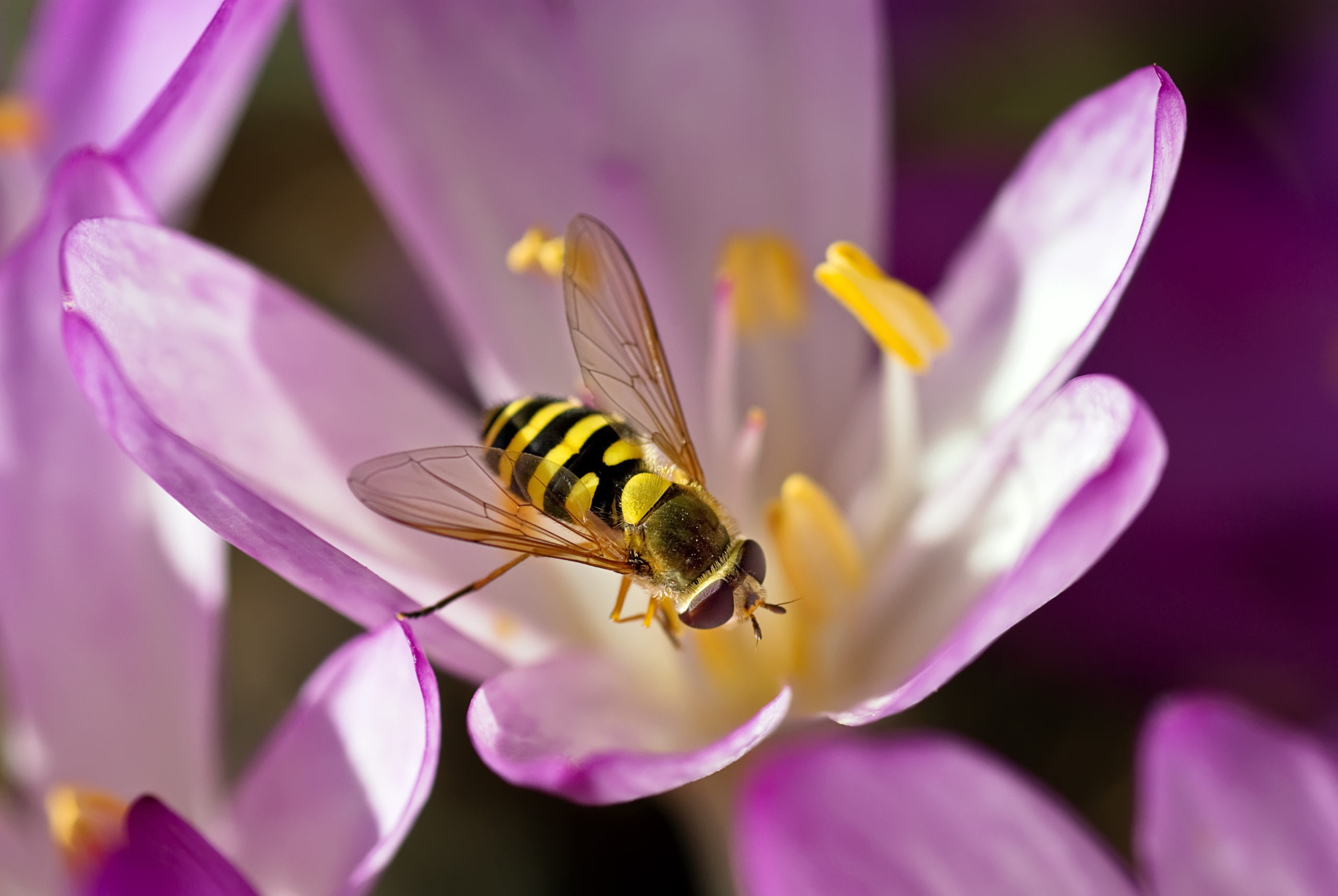
Hover flies go by an assortment of names, but their original name remains the most common. Also known as syrphid flies, flower flies, and drone flies, hover flies got their name from exactly what you would expect. They have the ability to hover in the air through rapidly vibrating their wings, which they will often do to assess their surroundings before darting to their target. They are usually black and yellow in color, but they can also have red, brown, or orange markings. Just like other flies, hover flies have one pair of wings and a typical fly-shaped head, with huge eyes and no antennae. These features are usually the defining factors when trying to decide if the insect flying above your flowers is a hover fly or wasp.
Hover flies are able to survive in this predator-eat-prey world largely because of their coloring. A larger creature, like a bird, sees the stripes and typically assumes that they found a dangerous wasp and not a tasty fly. But if the predator dares to go closer, they will find that the defenseless hover fly simply has similar preferences and habits of wasps without the sting! But one major difference of the hover fly is that it will actually migrate. There are an estimated 4 billion that migrate to south Britain every year, which is a nightmarish amount of insects of any kind. They are also found to migrate to the U.S., Australia, and Nepal. Hover flies overwinter, which explains why they would be able to migrate anyway. They can be adults or full larvae going into the winter that then emerge with a newfound energy in the spring.
A Hover Fly’s World
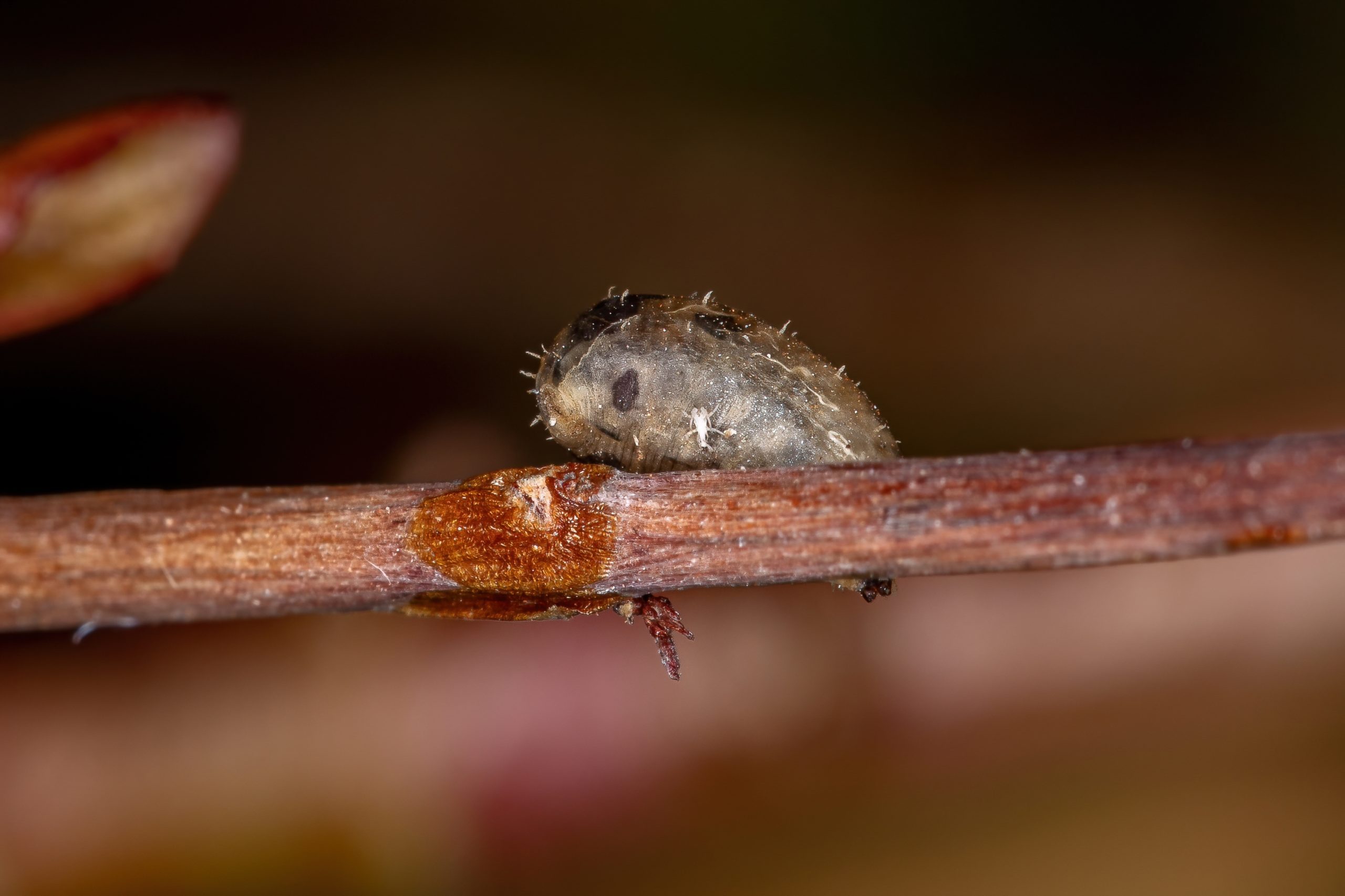
Speaking of young energetic hover flies, let’s talk about the early stages of this predatory fly. The white eggs are laid specifically near aphid colonies on plants. This practice, like with many other species, is done so that the hover fly offspring already has food as soon as they hatch about two to three days later. You see, hover flies are beneficial because they are great at controlling the populations of our most hated garden pests. Their favorites are aphids, caterpillars, thrips, and scales. As the young hover flies consume pests to their hearts content, they plump up and grow into dark plump sacks. They are still stuck to the plant, but they are definitely not the tiny hatchlings from before. The hover flies then pupate and attach themselves to the stem of the plant and make a cocoon. They will stay in there for about 10 days, then emerge as full-grown hover flies.
Hover flies spend the rest of their lives mostly living on plants, but they have the advantage as adults since they can fly to a new plant at a moment’s notice. Some of the non-predatory types of hover flies don’t live on plants since they don’t eat garden pests. These kinds stay on decaying vegetation or on still waters, so they have easy access to decaying organic matter for food. But as for the beneficial hover flies that enjoy eating insects, they are usually found near flowering plants of some kind. The general rule of thumb is that the more aphids are on a plant, the more hover flies you will see in that area. This is also because aphids and other pests aren’t the only meals hover flies choose to partake in.
Hover Fly Foodies
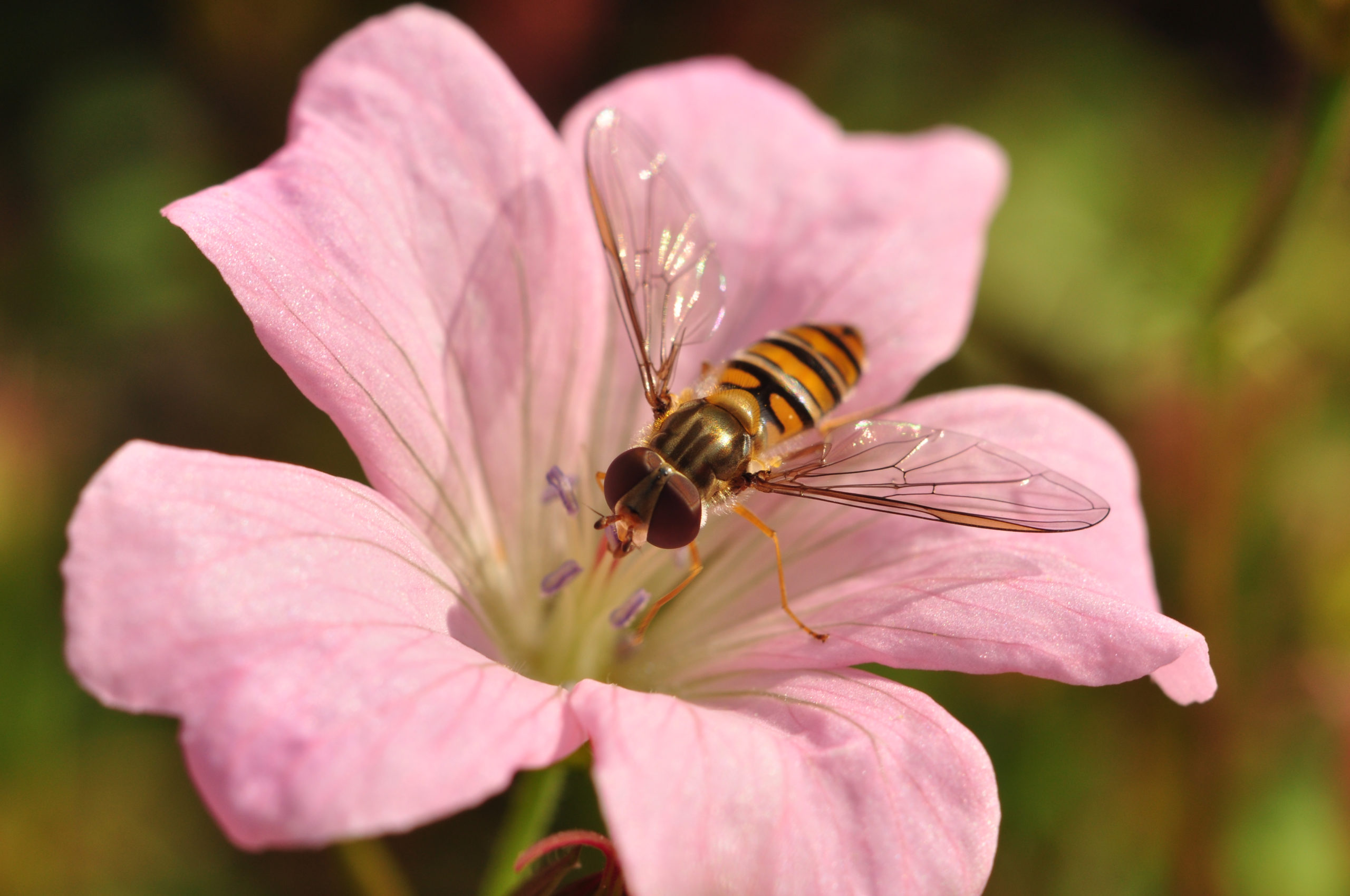
It’s a good thing hover flies seem to like living on plants, since all of their food groups are found on the flowery fauna! Hover flies obviously enjoy small insects, like we discussed, but they are also persistent pollinators. They drink nectar from flowers to gain energy for a busy day of hunting insects, and they consume pollen for nutrients needed to reproduce. Some studies show that they prefer white or yellow flowers, but it overall seems like hover flies are happy with any kind of flower. The advantage that hover flies have over bees or wasps is that they don’t have to care for their offspring once the eggs are laid near aphids. Bees and wasps have to return to their respective hives in order to bring back nutrients for the young and materials for the colony. Hover flies can fly as far as they want in order to find the best food sources.
There are a ton of plants hover flies appear to prefer, which means that they can be found in a wide range of areas. In addition to general flowering plants, hover flies seem to love dill, oregano, buckwheat, clover, parsley, sweet alyssum, and garlic chives. This may be because of the strong aromatics of these plants, but it could also be due to an abundance of garden pests near these crops. Hover flies prefer to stay near plants, but they are known to come close to humans on a hot day. For some reason, our salty sweat is a major draw for these flies. They don’t bite us, so nothing of importance happens when we swat them away on a sweltering day.
The Benefits of Hover Flies
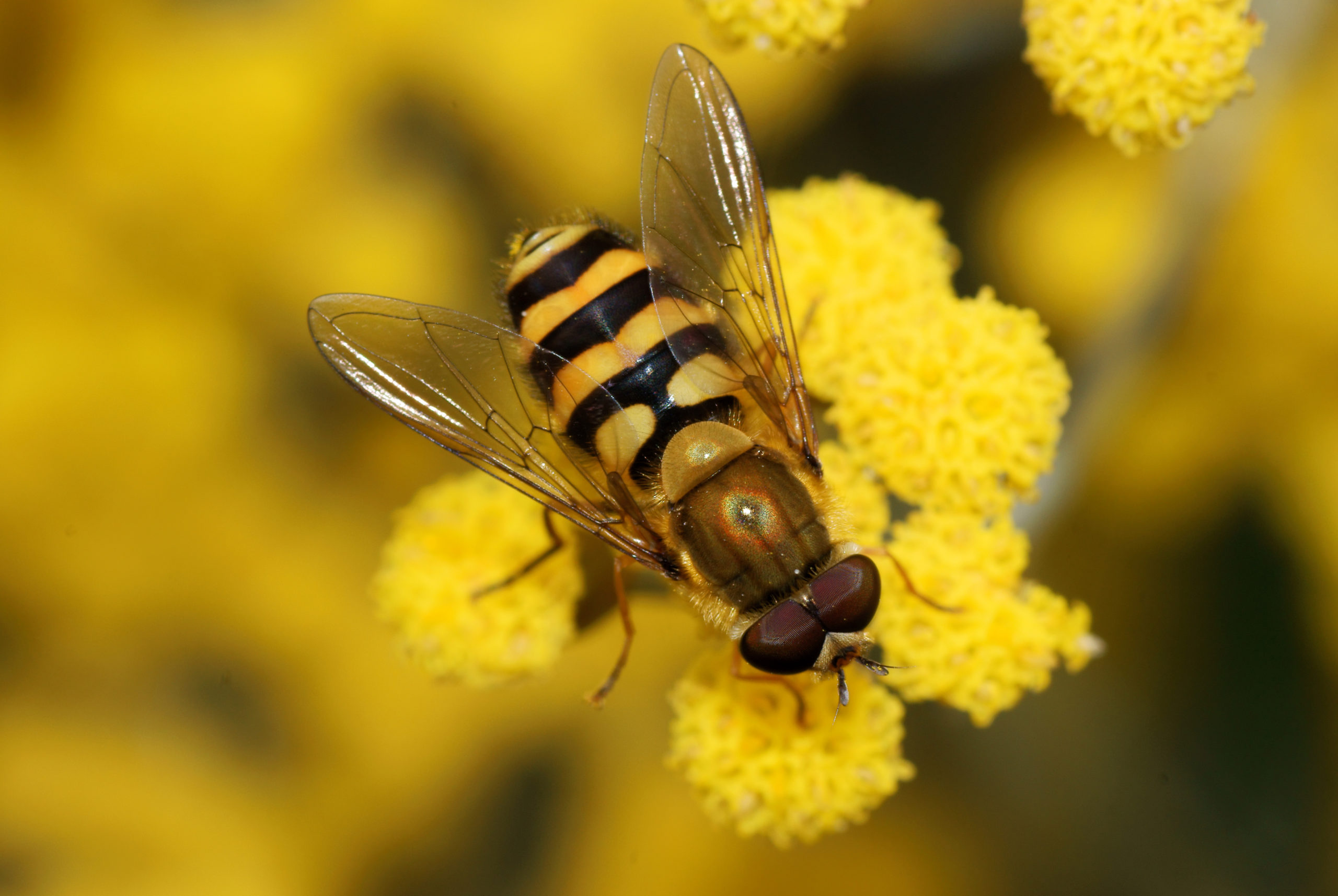
The benefits of hover flies go beyond the simple act of eating aphids and drinking nectar. While these are certainly helpful and benefit the general garden ecosystem, hover flies are actually a gardener’s or farmer’s best friend in multiple ways. For one, hover flies are actually believed to be more efficient pollinators than bees! This is because they can travel further distances and are willing to venture into garden settings that bees aren’t, like in greenhouses. Some hover flies are also really fuzzy, which collects pollen easily. And since flies are active all hours of the day, hover flies have more opportunities to pollinate plants than bees, who definitely have their preferred hours.
Many types of crops thrive thanks to the humble hover fly, especially strawberries. This is why some growers intentionally attract hover flies to their fields and orchards. Since you can’t buy hover flies from the store, like you would with ladybugs, the growers have to do the hard work themselves. Some leave roadkill or fish near their plants, which sounds like the worst smelling field ever. But it’s a smart move if you want to attract a bunch of beneficial flies. Even though there isn’t a ton of scientific evidence to back up this practice, many growers feel that it does work and their crops are better for it. Interestingly enough, it seems that mangoes are one of the crops that benefits the most from hover flies specifically. If the security of our food supply relies on the hard work of hover flies, then it might not be the worst thing for them to hang around an orchard for longer than we would normally like for insects to be there.
But…Isn’t that Just a Bee or Wasp?
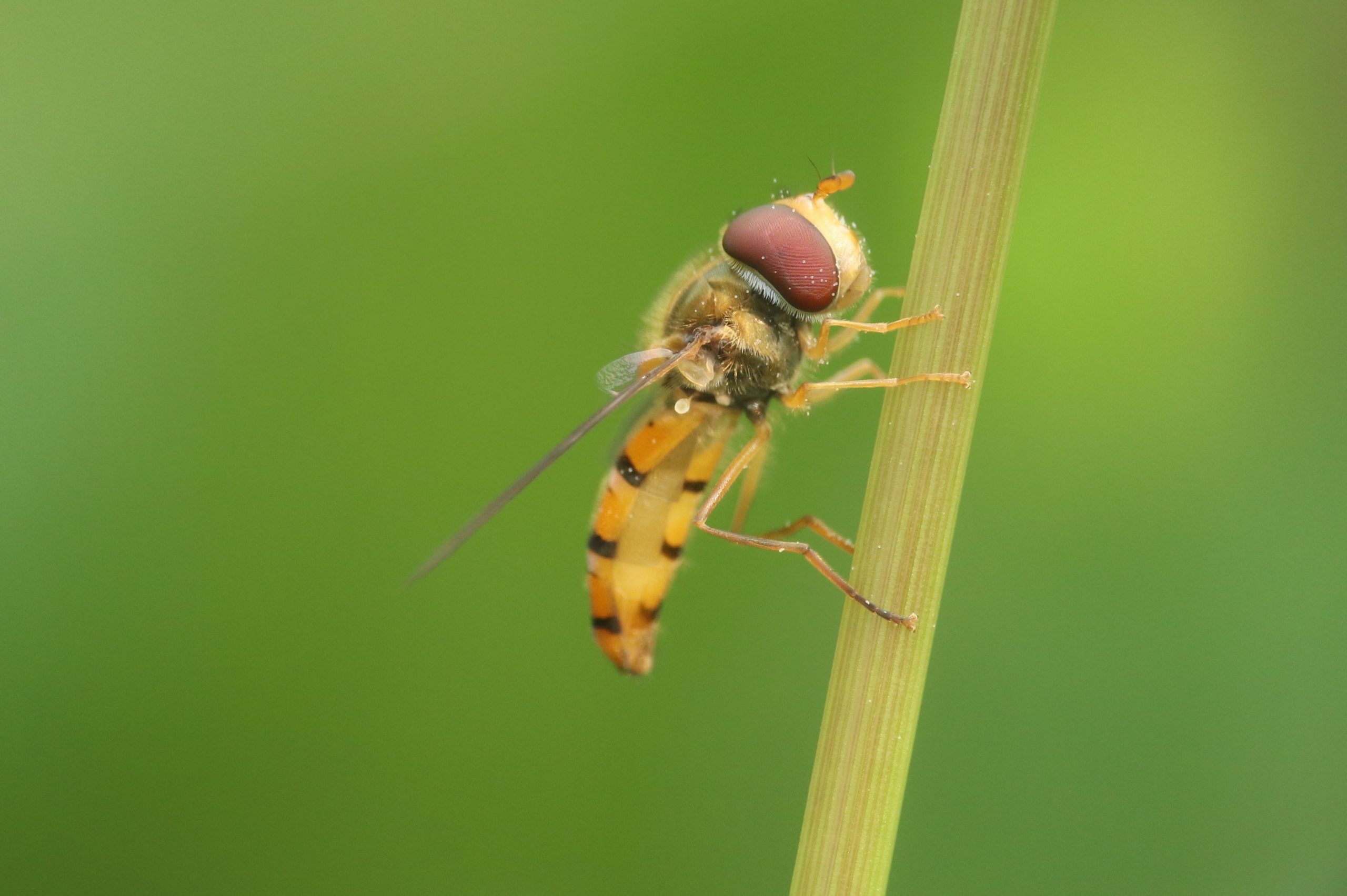
Based on the benefits and features of a hover fly, it may seem like we’re just talking about your average honey bee or yellow jacket. And they do certainly share a lot of similarities. They are all excellent pollinators, beneficial by nature, black and yellow in color, and thrive in the spring and summer. But there are more differences than similarities, some of which we have already hinted at earlier.
Here is a short list of what makes hover flies different from their stinging lookalikes:
- Hover flies don’t bite or sting at all. They are about as threatening as a house fly, except even less so since hover flies don’t carry the amount of bacteria that house flies do.
- Hover flies don’t live in a hive or colony. They lay their eggs and leave, which their offspring also does as soon as they are fully grown.
- Hover flies can be active for a huge chunk of the day. Bees and wasps are more active during the hottest part of the day, but hover flies can work in the morning or evening if it’s still light out.
- Hover flies also can be active in varying temperatures. They can’t do much in cold climates, like any insect, but they can still pollinate and eat when the temperatures aren’t super high.
- Hover flies look exactly like a fly when you get a close look. Between their massive eyes and single pair of wings, they are clearly a member of the fly family rather than the stinging insect family.
Flies are annoying when they decide that buzzing around our heads would be a good use of their time, but hover flies don’t pose the same kind of threat as a bee or yellow jacket. They can’t hurt us even if they wanted to, and they don’t have a huge colony as back-up. But at the end of the day, all of these insects help the ecosystem enough to make them annoying (and a little painful) pests, not monsters.
Pest Control is the Most Beneficial
As beneficial as hover flies are to the ecosystem, they still come with the fatal flaw that all beneficial insects do: they can become pests through their own existence. They are good helpers for farmers and growers, and aren’t a noticeable problem in the middle of a field. It’s great that hover flies control the aphid population so much, but the last thing you want in your home garden (besides aphids) is a bunch of flies. Even if the insect doesn’t bite or sting, it’s still a nuisance to swat a swarm while you try to enjoy the outdoors. But our pest control team is always happy to provide treatments that free your yard of pests without the use of harmful chemicals. Contact our team to find out more about our services and how you can live a pest-free life, be it freedom from aphids or hover flies!
Citations
Carroll, J. (2021, May 14). Hover fly information: Plants that attract hover flies to the garden. Gardening Know How. Available at https://www.gardeningknowhow.com/garden-how-to/beneficial/hover-flies-in-gardens.htm (Accessed on June 30, 2022).
Kautz, A. & Gardiner, M.M. (2016, January 12). Ohio’s natural enemies: Hover flies. Ohioline Agriculture and Natural Resources. Available at https://ohioline.osu.edu/factsheet/ent-73 (Accessed on June 30, 2022).
Pain, S. (2021, March 8). How much do flies help with pollination?. Smithsonian Magazine. Available at https://www.smithsonianmag.com/science-nature/how-much-do-flies-help-pollination-180977177/ (Accessed on June 30, 2022).
Where Do Spiders Like to Hide? A Locals’ Guide to Sneaky Spider Spots (and What to Do About Them)
Where Do Spiders Like to Hide? A Locals’ Guide to Sneaky Spider Spots (and What to Do About Them) Where Do Spiders Like to Hide? [...]
Why Do We See So Many Pests in the Fall?
Why Do We See So Many Pests in the Fall? Why Do We See So Many Pests in the Fall? Summary: Fall’s cooler [...]
Why German Cockroaches are Such Problem Pests (And How to Get Rid of Them)
Why German Cockroaches are Such Problem Pests (And How to Get Rid of Them) Why German Cockroaches are Such Problem Pests (And How to Get [...]
Summer is Ending, But Pests are Still Going Strong
Summer is Ending, But Pests are Still Going Strong Summer is Ending, But Pests are Still Going Strong Summary: Summer is coming to [...]
10 Tips for Going Back to School Pest-Free
10 Tips for Going Back to School Pest-Free 10 Tips for Going Back to School Pest-Free Summary: The school year is a busy [...]
What is Bug Spray, Really?
What is Bug Spray, Really? What is Bug Spray, Really? Summary: Bug spray is a great tool for preventing pests during outdoor activities, [...]

